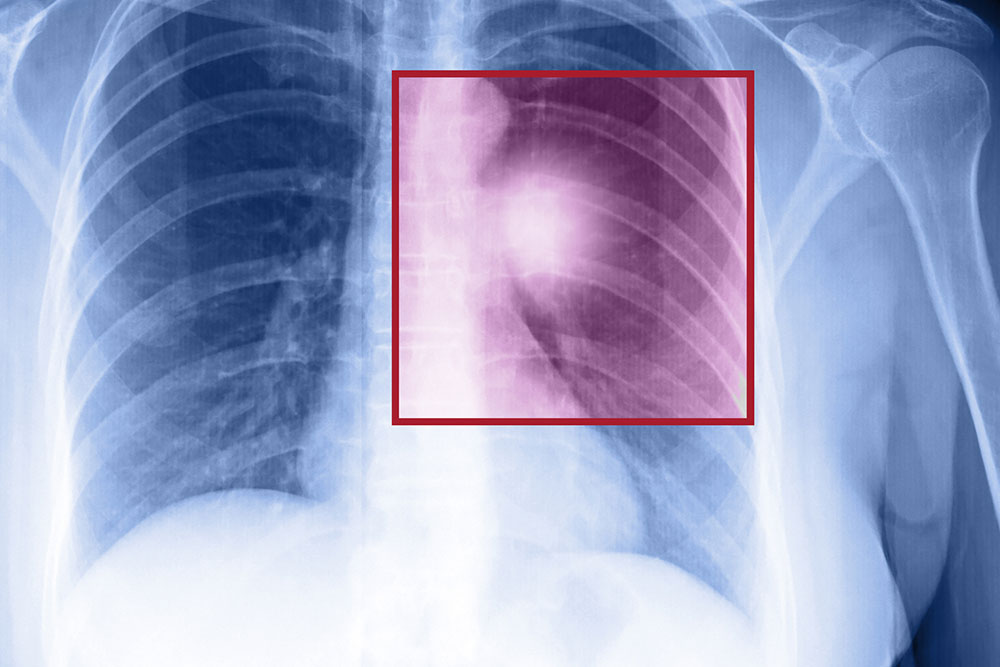Symptoms and Treatment of Metastatic Lung Cancer
Cancer is a life-threatening condition that typically forms particularly in one area or region of the body and this region is known as the primary site. Cancer cells can travel to other parts of the body, breaking away from its primary site through the bloodstream or the lymph system and is called metastasis. Metastatic lung cancer occurs when cancer cells break away from a tumor formed in the lungs and travel to other parts of the body through the blood or the lymph system.

The most common sites of metastasis for lung cancer are the other lung, adrenal gland, bones, brain, and liver. Metastatic lung cancer is very different from recurring lung cancer, as recurring lung cancer affects the same part of the lung after being treated rather than moving to some other parts of the body. A metastatic cancer is always caused by the cancer cells developing in some other regions and traveling to another part of the body.
Symptoms of metastatic lung cancer
The symptoms of metastatic lung cancer are related to the area to which cancer spreads and these symptoms can be general. These general symptoms are often confused with some other issues. Hence, this condition is very difficult to identify as it does not always cause discernible symptoms. However, we have listed some of the common symptoms which are related to the site where a new tumor has developed:
- Bones
Patients with lung cancer have a 40 percent chance of developing bone metastases which include symptoms such as pain. Moreover, the bones become more fragile, leading to the risk of development of fracture and cracks. - Brain
Non-small-cell lung cancer is a common type of lung cancer which currently accounts for more than 80 percent of the lung cancer cases around the world. Among these patients with advanced non-small-cell lung cancer, about 20 to 40 percent have high chances of developing brain metastases. Symptoms such as headaches, fatigue, confusion, nausea, and weakness are common. - Lymph Nodes
Enlarged lymph nodes in the armpits, neck, and stomach are common signs that cancer from the lungs has spread to the lymph system. Sometimes, the swelling can occur due to some other diseases. - Liver
Loss of appetite, nausea after eating or pain right under the right ribs can be some of the general signs and symptoms of cancer in the liver. Development of jaundice along with yellowing of the skin can be another symptom of liver cancer. - Adrenal Glands
Cancer spreading to adrenal glands from the lungs usually carries no symptoms other than the feeling of fatigue and weakness due to the drop in the adrenal hormone levels.
Diagnosis
If metastatic lung cancer is suspected then doctors and health experts will check areas in the body where lung cancer usually spreads through various physical exams and other diagnostic tests. Diagnosis of metastatic lung cancer is usually conducted with the following tests:
- Chest X-ray which provides detailed images of the lungs.
- CT scan which produces clear pictures of the cross section of the lungs.
- Lung needle Biopsy which allows a doctor to examine and analyze a small sample of lung tissue.
- Bronchoscopy which is performed by your doctor to directly visualize all the structures that make up the whole respiratory system including the lungs.
- Other diagnostic tests may also include blood tests, bone scans, MRI scans, and ultrasounds.
Treatment
The main objective of metastatic lung cancer treatment is to control the further spread and growth of the cancer cells or to relieve the symptoms. There are several types of treatment available for metastatic lung cancer and every treatment plan depends on different factors such as your age, your overall health condition, medical background, type of primary cancer, size and location of a tumor or tumors.
Different types of metastatic lung cancer treatment include:
- Chemotherapy
This is the most common and preferred treatment plan for metastatic lung cancer when the cancer is in the more advanced stage and has already spread to other organs in the body. It is actually an aggressive form of therapy that uses certain types of chemicals and medicines to destroy the cancerous cells present in your body. - Radio or radiation therapy
This is also a type of therapy used to treat the metastatic type of lung cancer when cancer has spread to just one area. It uses high energy radiations to shrink tumors and kill cancerous cells. - Laser Therapy
It uses high-intensity light to destroy tumors and cancerous cells which may be blocking an airway. - Other treatment plans
Apart from different types of therapies, surgery may be also performed to remove metastatic tumors in the lungs along with the application of certain medicines.
Although metastatic lung cancer is life-threatening, it may be diagnosed and treated at an early stage. So, if someone has been already diagnosed with primary lung cancer, they should attend all appointments and treatments with doctors if new symptoms develop and persist for more than a few days.